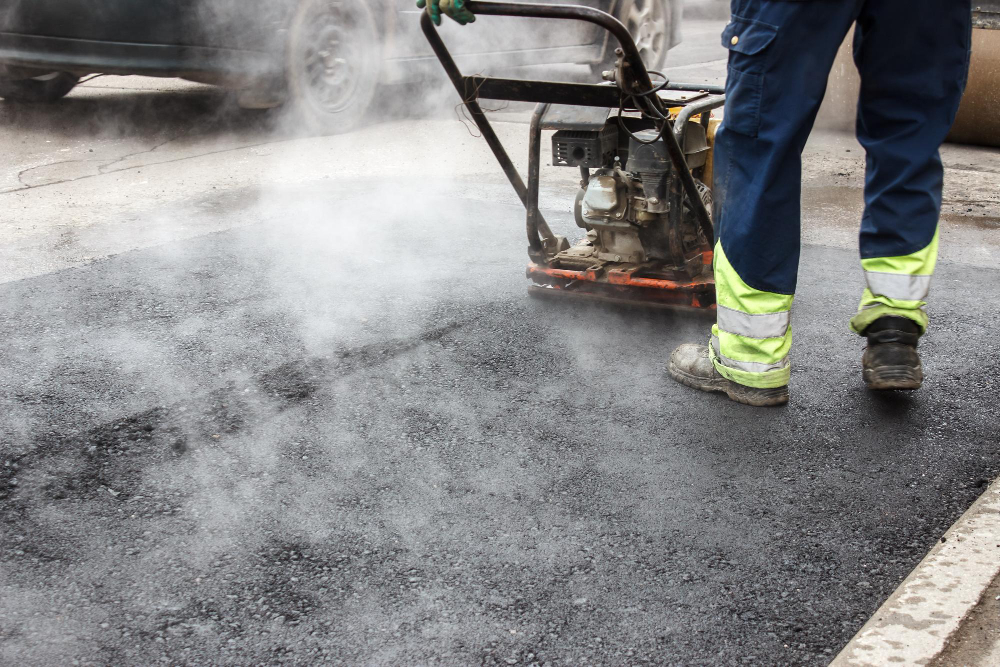
Your asphalt driveway or parking lot shows signs of wear, and you know it needs attention. But what type of repair or maintenance does it actually need? Understanding the differences between sealcoating, resurfacing, and repaving can save you thousands of dollars and ensure you choose the right solution for your specific situation.
Each method serves different purposes and addresses varying levels of asphalt damage. Sealcoating protects relatively new surfaces, resurfacing tackles moderate deterioration, and repaving rebuilds severely damaged areas from the ground up. Making the wrong choice could mean spending more money than necessary or failing to adequately address your pavement's problems.
This guide breaks down each option, helping you identify which approach best fits your pavement's condition and your budget.
Sealcoating involves applying a protective liquid layer over existing asphalt surfaces. This thin coating shields your pavement from UV rays, water penetration, oil spills, and other damaging elements.
Think of sealcoating as sunscreen for your asphalt. Just as sunscreen protects your skin from harmful UV damage, sealcoating creates a barrier that prevents oxidation and weathering. The process typically uses coal tar or asphalt-based sealers mixed with sand, additives, and water.
Sealcoating works best for pavements that are:
Small hairline cracks and slight color fading are perfect candidates for sealcoating. However, this method won't fix underlying structural issues or fill large cracks and potholes.
Regular sealcoating extends asphalt life significantly. A properly maintained surface can last 15-20 years compared to 7-10 years without protection. The treatment also improves curb appeal by restoring that fresh, dark appearance that makes properties look well-maintained.
From a cost perspective, sealcoating offers exceptional value. It costs a fraction of resurfacing or repaving while adding years to your pavement's lifespan.
Resurfacing, also called overlay, involves adding a new layer of asphalt over the existing surface. This process addresses moderate damage while maintaining the current base structure.
During resurfacing, contractors typically mill off the top 1-2 inches of damaged asphalt, then apply a fresh layer. This approach tackles surface-level problems without the expense of complete reconstruction.
Consider resurfacing when your pavement shows:
Resurfacing works well for pavements that have structural integrity but suffer from surface-level damage. It's particularly effective for driveways and parking lots with isolated problem areas.
This middle-ground option costs significantly less than full repaving while addressing more serious damage than sealcoating can handle. Resurfacing also completes faster than total reconstruction, minimizing disruption to your daily activities.
The new surface layer provides a smooth, attractive appearance that can last 8-15 years with proper maintenance.
Repaving involves complete removal and replacement of your asphalt surface, including the base layer when necessary. This comprehensive approach addresses severe structural damage and provides a completely fresh start.
The repaving process includes excavation, base preparation, and installation of entirely new asphalt layers. Contractors may also upgrade drainage systems and address underlying soil issues during this process.
Repaving is the right choice for pavements with:
Severely damaged surfaces that have received multiple patch jobs often require complete reconstruction to ensure long-term reliability.
While repaving represents the highest upfront investment, it provides the longest-lasting solution. A properly constructed new surface can last 20-30 years with appropriate maintenance.
Complete reconstruction also allows for improvements to drainage, slope, and overall design. This comprehensive approach eliminates ongoing repair costs for several decades.
Budget considerations play a major role in choosing between these options. Sealcoating typically costs $0.15-0.25 per square foot, making it the most economical choice for preventive maintenance.
Resurfacing costs range from $2-5 per square foot, depending on thickness and local conditions. This represents a middle-ground investment that addresses moderate damage effectively.
Complete repaving costs $3-7 per square foot or more, reflecting the comprehensive nature of total reconstruction. While expensive initially, repaving often provides the best long-term value for severely damaged surfaces.
Assess your pavement's current condition honestly. Minor surface issues respond well to sealcoating, while moderate damage calls for resurfacing. Extensive structural problems require complete repaving.
Consider your long-term plans for the property. If you're planning to sell within a few years, sealcoating or resurfacing might suffice. For long-term ownership, investing in repaving could prove more economical over time.
Climate factors also influence your decision. Areas with extreme temperature fluctuations or heavy precipitation may benefit from more robust solutions like resurfacing or repaving.
Determining the best approach often requires professional evaluation. Experienced contractors can identify underlying issues that aren't immediately visible and recommend the most cost-effective solution.
Professional installation ensures proper preparation, material application, and long-term performance regardless of which method you choose. Quality workmanship makes the difference between a repair that lasts years versus one that fails prematurely.
If you need professional sealcoating in Palm Coast, FL, contact Florida Sealcoating today for free estimates. Their experienced team can assess your specific situation and recommend the most appropriate and cost-effective solution for your pavement needs.
Regardless of which option you choose, proper maintenance extends the life of your investment. Regular cleaning, prompt crack sealing, and periodic sealcoating help prevent minor issues from becoming major problems.
Establishing a maintenance schedule based on your pavement's age, condition, and usage patterns ensures optimal performance and appearance for years to come. Proactive care costs far less than reactive repairs and replacements.